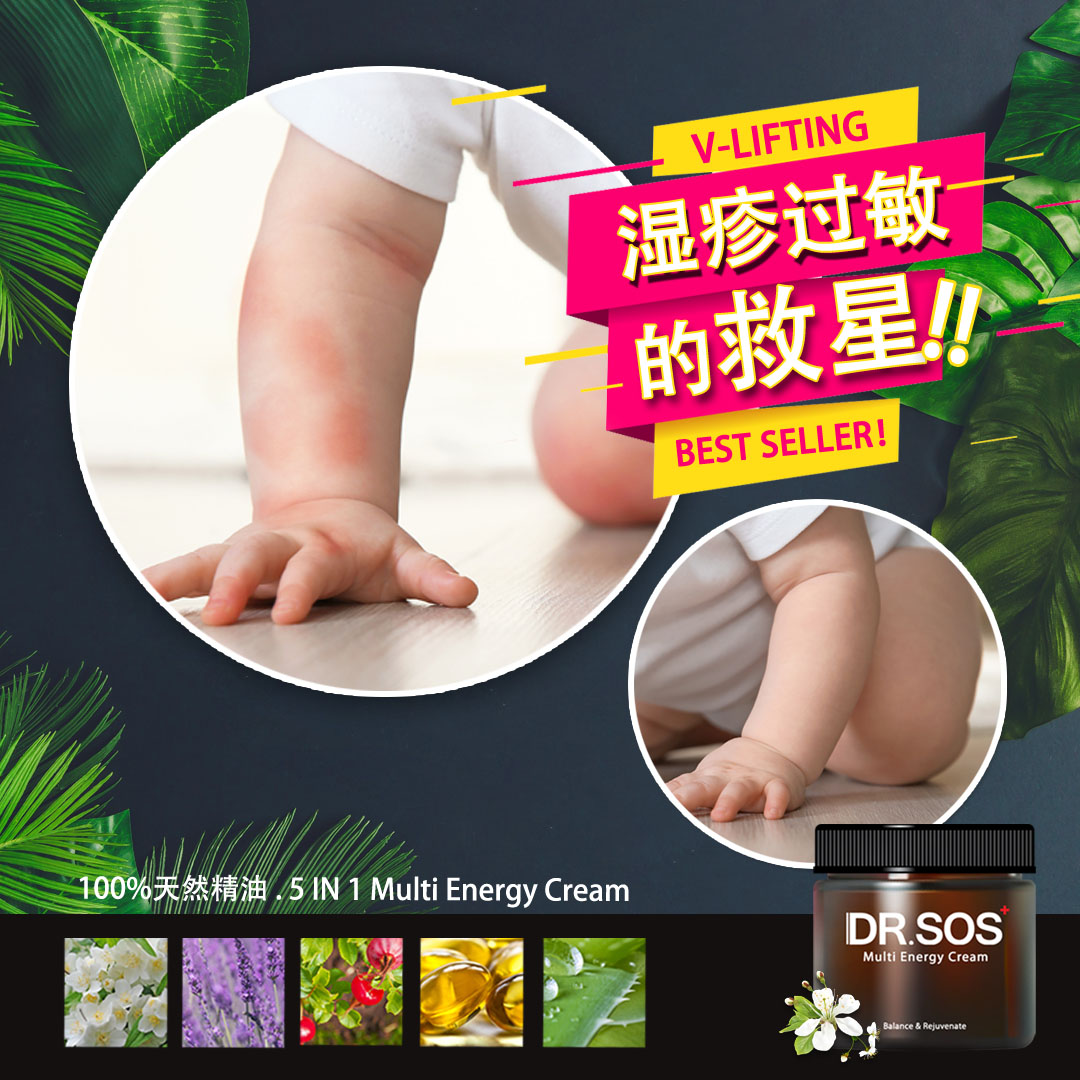What is eczema?
Eczema is a skin condition that causes itchy skin. It can also be known as dermatitis, the medical word for a rash on the skin. Eczema is more common in babies and young children, but it can affect people of all ages. It is a chronic skin condition that some individuals will outgrow.
Eczema has periods of flares and remissions. Flares mean that something has irritated the skin, and it is actively itchy and inflamed. Remissions mean the skin is healed and not irritated; these periods can last months or even years. An eczema rash can be dry and red, scaly looking or even oozy and crusty — but they are always extremely itchy. Eczema is not a contagious skin condition, but some people are genetically more likely to develop it than others.
Types of Eczema
The three main types of eczema are atopic dermatitis, contact dermatitis and nummular eczema. There are also several other skin conditions that can be related to eczema which also cause itchy and dry skin.
Atopic dermatitis is the most common and usually the most severe form of eczema. It is also the one most commonly found in children. It is an inflammatory skin condition that causes intense itching of the skin. The most common locations for the itching are the elbows, backs of knees and the face. Atopic dermatitis is more common in children who suffer from asthma and seasonal allergies. In the examples given above, Jane’s skin rash developed with her asthma symptoms, meaning she must have atopic dermatitis.
Contact dermatitis is when a specific irritant or allergen comes in contact with the skin. The skin reacts to the irritating substance by becoming red, inflamed and itchy. It is an allergic reaction of the skin. Common things that can cause contact dermatitis are chemicals, fabrics, beauty care products or poison ivy. The irritating substance can be something that you have come in contact with before, and your body has built up an allergy over time, or it could be something that you react to instantly. The skin can be red dry and scaly or blistering like a burn from the reaction. Sounds like the reason Sam developed a rash using new detergent was because his skin was allergic to it.
Nummular eczema has more of a distinct form than the other types mentioned. It is often shaped like a coin, and there can be several patches on the body. Frequently it is the body’s reaction to inflammation caused by something such as a bug bite. It can also happen when the skin becomes too dry in the winter. Mike’s rash was caused from dry skin in the winter with an itchy, red, coin-like rash.
Symptoms
The symptoms of atopic dermatitis can vary, depending on the age of the person with the condition.
Atopic dermatitis commonly occurs in infants, with dry and scaly patches appearing on the skin. These patches are often intensely itchy.
Most people develop atopic dermatitis before the age of 5 years. Half of those who develop the condition in childhood continue to have symptoms as an adult.
However, these symptoms are often different to those experienced by children.
People with the condition will often experience periods of time where their symptoms flare up or worsen, followed by periods of time where their symptoms will improve or clear up.
Symptoms in infants under 2 years old
- Rashes commonly appear on the scalp and cheeks.
- Rashes usually bubble up before leaking fluid.
- Rashes can cause extreme itchiness. This may interfere with sleeping. Continuous rubbing and scratching can lead to skin infections.
Symptoms in children aged 2 years until puberty
- Rashes commonly appear behind the creases of elbows or knees.
- They are also common on the neck, wrists, ankles, and the crease between buttock and legs.
Over time, the following symptoms can occur:
- Rashes can become bumpy.
- Rashes can lighten or darken in color.
- Rashes can thicken in a process known as lichenification. The rashes can then develop knots and a permanent itch.
Symptoms in adults
- Rashes commonly appear in creases of the elbows or knees or the nape of the neck.
- Rashes cover much of the body.
- Rashes can be especially prominent on the neck, face, and around the eyes.
- Rashes can cause very dry skin.
- Rashes can be permanently itchy.
- Rashes in adults can be more scaly than those occurring in children.
- Rashes can lead to skin infections.
Adults who developed atopic dermatitis as a child but no longer experience the condition may still have dry or easily-irritated skin, hand eczema, and eye problems.
The appearance of skin affected by atopic dermatitis will depend on how much a person scratches and whether the skin is infected. Scratching and rubbing further irritate the skin, increase inflammation, and make itchiness worse.
Home care
There are numerous things that people with eczema can do to support skin health and alleviate symptoms, such as:
- taking lukewarm baths
- applying moisturizer within 3 minutes of bathing to “lock in” moisture
- Apply Dr. SOS Multi-Energy Cream to moisture your skin every day
- wearing cotton and soft fabrics, and avoiding rough, scratchy fibers and tight-fitting clothing
- using a mild soap or a non-soap cleanser when washing
- air drying or gently patting skin dry with a towel, rather than rubbing the skin dry after bathing
- where possible, avoiding rapid changes of temperature and activities that make you sweat
- learning and avoiding individual eczema triggers
- using a humidifier in dry or cold weather
- keeping fingernails short to prevent scratching from breaking the skin
Even though the condition itself is not yet curable, there should be a particular treatment plan to suit each person with different symptoms. Even after an area of skin has healed, it is important to keep looking after it, as it may easily become irritated again.

More useful tips >>
6 Benefits of Neroli Essential Oil
What precious botanical oil requires around 1,000 pounds of handpicked flowers to be produced? I’ll [...]
8 Ways to Boost Your Immune System (Chinese Version)
(Chinese Version) If you want to boost your immune health, you may wonder how to [...]
8 Ways to Boost Your Body’s Immune System
If you want to boost your immune health, you may wonder how to help your [...]
Understand Eczema- Types, Causes, Symptoms & Treatment
What is eczema? Eczema is a skin condition that causes itchy skin. It can also be [...]



